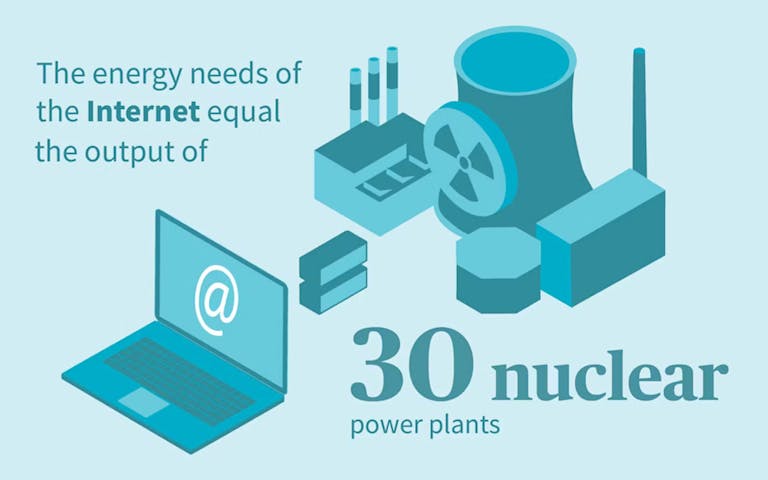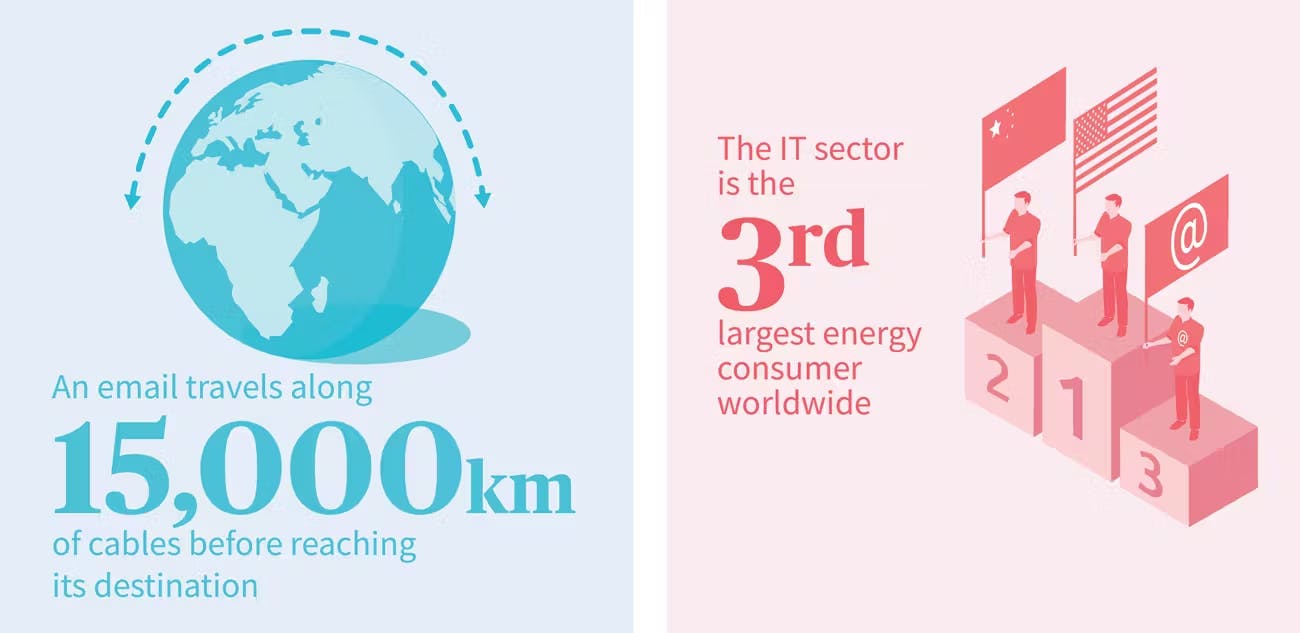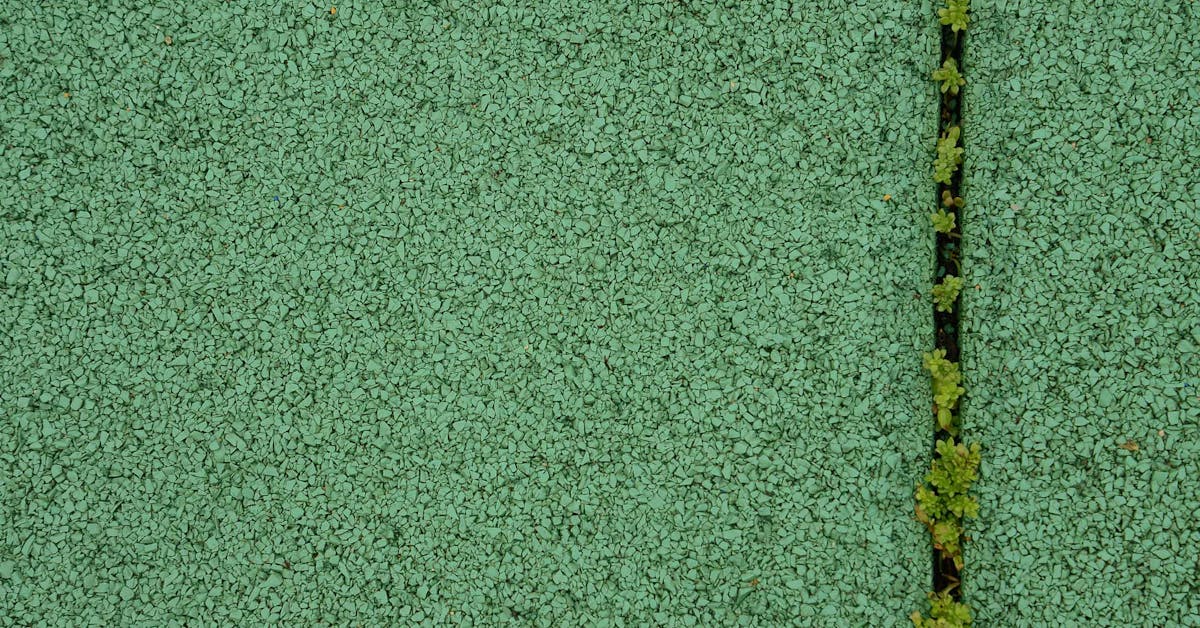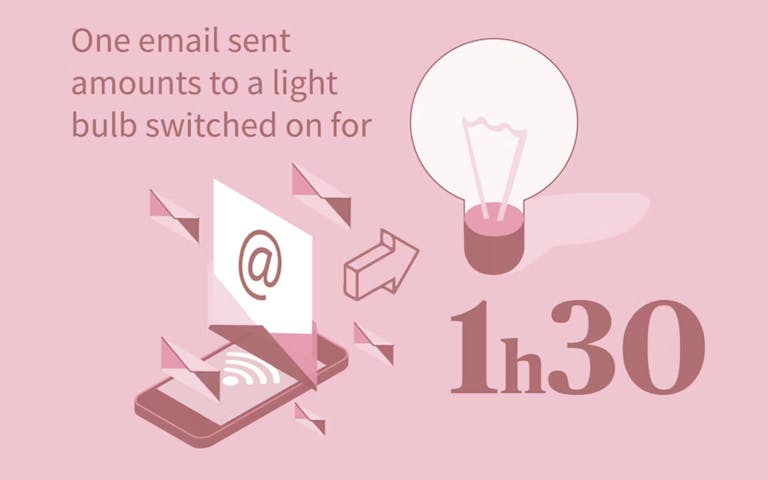November 14, 2017
Green IT : towards a green (r)evolution
2 minutes
It's Monday! It's 9:30. I’m sending my third email today. A little message, not that important to a friend sitting just 2 metres away from me. A megabyte as light as air propelled into a cloud of abstract data. Light as air? Not so sure…
For most of us, digital is something abstract. When we use our laptop to send an e-mail, make a PowerPoint presentation or start a conference call, we don’t think of all the hidden processes that allow us to perform these now commonplace actions in our daily lives. We don’t think of the 16 kilos of ore needed to make a computer chip, neither do we think about the energy used to heat our building and to cool the server to which we are connected. We must realize that sending an e-mail of 1 MB is equivalent to19 grams of CO2. And by simply adding 10 people in copy multiplies this impact by four!
In fact, every electron produced passes through thousands of kilometres of cable between the power plants and the destination. Each computer is the result of almost 2 tons (!) of raw materials. These tools are the result of complex, very greedy mechanisms in energy and raw materials. And it is these tools that we use to make our operations efficient and drive profitability.

Not just that, new technology is a wonderful opportunity to address the environmental challenge. It means we can make heating and electricity supply optimal for our buildings and reduce our water consumption. Business travelling can now be replaced by meetings over the net and teleworking is made possible to keep business travelling to a strict minimum... More than ever, the company should encourage this good and beneficial behaviour. But if IT is a great facilitator for ecological transition, it must also have its own green (r) revolution. Because digital still has a high environmental cost which we are only just starting to become aware of.

For example, an estimated 5% of servers switched on in the world are of no use. These servers produce 3.8 million tons of unnecessary greenhouse gases, the equivalent of emissions from 500,000 Europeans. This costs 24 billion dollars a year -” peanuts”. This is the reason why in 2015 we undertook an effort to rationalise and reduce the number of servers used.
Related content

AXA launches new climate change actions
read moreOur company has put strict rules and regulations in place to really take part in the fight against climate change. For example, we have committed ourselves to using 100% electricity from renewable sources between now and 2025. This is already the case for several data centres in Switzerland and in Germany. To achieve the target fixed, we have managed to get our concerned entities to agree on deadlines. The process is simple. We contact them and tell them: Right, this is your current consumption, we believe that you can reduce your CO2 emissions, so how do you feel about using solar, wind or hydroelectric energy?
We analyse the situation together and then proceed to make the most relevant choice possible, depending on the reliability of various sources of energy available on the local market. This is just one of the many ways we use to reduce the environmental impact of the company as a whole. We also make sure we optimize the lifecycle of our computer equipment and recycling, thus abiding by the rules for waste electronic and electrical equipment (WEEE).
We now limit our consumption of water by equipping buildings with special sensors and we have changed our policies with regards printing and paper supply. 95% of our paper now comes from sustainable and recycled sources.

By 2020, one of our objectives is to reduce our CO2 emissions by 25%. In practice, this means a reduction of:
- 35% of our electricity consumption
- 5% of business trips by plane and train.
- 15% of car journeys,
- 45% of the paper used in offices,
- 50% of the paper used for the marketing and distribution.
These figures are both concrete goals and strategic guidelines. If we can really adopt this way of working, then we will really be able to make a difference.
We will only be able to reduce our environmental footprint if we insist on making this issue something to think about on a daily basis. All our small decisions in our personal and professional lives should be made with the good of the environment in mind: for example, we should make sure we turn off our computers at night, set up standby, cut back on emails and attachments, avoid colour printing, use teleworking. These actions can really change things. This new way of working is one the key enablers for reaching the environmental goals that we have fixed. It is my conviction that it is only by working together that we will be able to reach our goal. So, next Monday, at 9:30, when sending your 3rd email, ask yourself whether the attachment is really needed!



